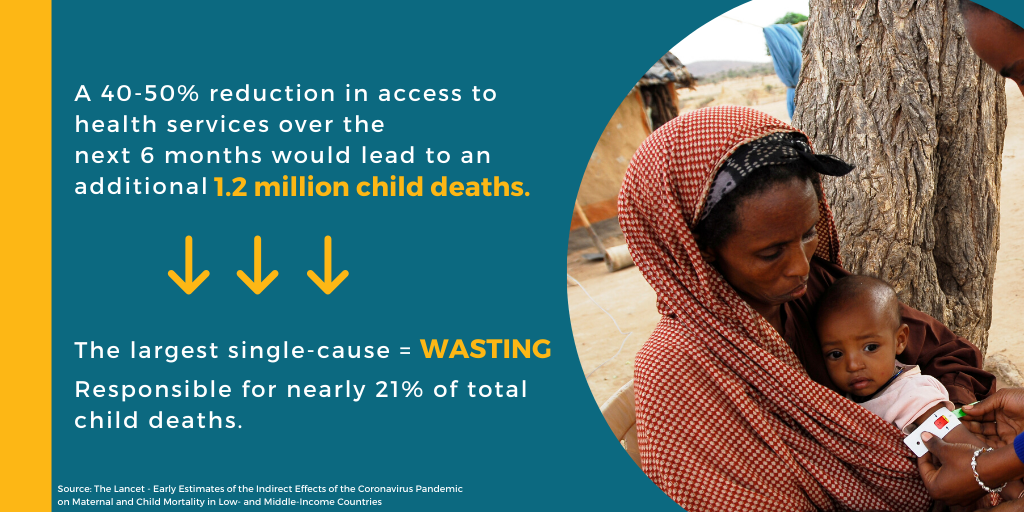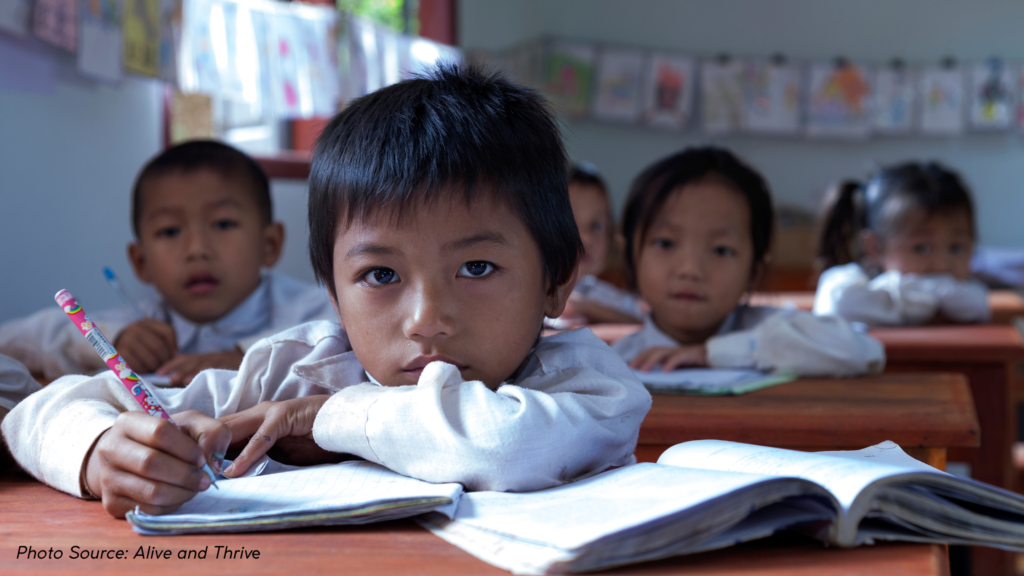Severe Malnutrition Resource Hub
Severe malnutrition occurs when a child reaches the most serious stage of any form of malnutrition and is at the greatest risk of death, disease, and long-term disability. High-risk forms of malnutrition include children who are too thin (wasted), too short (stunted), too small (underweight). Risks increase when you have combinations of these in the one child, when a child is sick, or when a baby is born malnourished.
- Every year, millions of children worldwide are severely malnourished, and roughly 3 million children die because of severe malnutrition.
- Not only are severely malnourished children much more likely to die than their well-nourished peers, those who survive are also much more likely to suffer from lifelong illness and impaired cognitive development.
- Severe Malnutrition is the number one killer of kids under 5, killing more kids every year than AIDS, malaria, and tuberculosis combined.
- Severe malnutrition stunts potential and wastes lives, but it doesn’t have to. Scaling up proven nutrition interventions will allow children around the world to escape these preventable deaths.
After years of steadily declining rates around the world, malnutrition is on the rise again.
- We know that implementing proven nutrition interventions at scale will reduce malnutrition rates, but the number of severely malnourished children is growing.
- These children’s deaths are preventable and their increase is a tragedy we can act to avoid.
How Can We Help the Children Who are Dying Malnutrition has many root causes including poverty, lack of education, erratic seasonal crop cycles, climate change, women’s inequality, and poor access to water, sanitation, and hygiene. As the world works to tackle these major challenges, which will help end child malnutrition in the long-term, there are four essential actions we can take now to prevent children from dying of severe malnutrition. These interventions span the course of the critical 1,000-day period between a woman’s pregnancy and a child’s second birthday when there is a unique window of opportunity to build healthier and more prosperous futures for mothers and their babies.
- Supply all pregnant women with prenatal vitamins Despite the proven benefits of supplying pregnant women with a full dosage of multiple-micronutrient supplements (MMS), the majority of women do not have access to these critical supplements. MMS increases the chances a baby will be born at a healthy weight and survive to his or her second birthday.
- Support breastfeeding mothers Babies get the best start at life when they drink nothing but breastmilk until they are 6 months old, and continue breastfeeding until they are 2 years old while also consuming other nutritious complementary foods. Even though breastfeeding is the best way to protect newborns from malnutrition, infections, and disease, only 41% of babies around the world are exclusively breastfed. Many mothers who would like to breastfeed cannot access the support and information they need to be successful. One-to-one and group breastfeeding counseling helps provide mothers with the support they need to reach their breastfeeding goals.
- Continue large-scale Vitamin A Supplementation Supplying a child with two high doses of Vitamin A every year is one of the most cost-effective ways to protect children from blindness, diarrhea, and other fatal illnesses. Until recently, Vitamin A supplementation was routine and easily accessible because it had been paired with national polio vaccination efforts. However, now that polio has been mostly eradicated, these vaccination campaigns are being phased out. After years of increasing, the number of children who have access to Vitamin A coverage has started to drop alarmingly. Transitioning national Vitamin A supplementation efforts to a sustainable delivery platform is essential to ensuring children continue to receive this critical preventive regimen.
- Expand coverage of specialized foods for treatment The first priority of any nutrition program should be to make wasting treatment unnecessary by preventing children from ever becoming wasted. Unfortunately, millions of children every year still require wasting treatment. Ready-to-Use Therapeutic Food (RUTF) is an energy-dense, life-saving product that gives wasted children the nutrients they need to survive. Yet we are reaching less than a quarter of even the most severely malnourished children. Expanding coverage of services will help ensure no child dies because they don’t have access to the fundamental treatment they need to stay alive.
Development plays a critical role in America’s response to a range of economic, humanitarian, and geopolitical issues – and the crisis of hunger and malnutrition is at the center of each of these. Nutrition is a powerful booster shot for U.S. investments across global health and development. Nourish the Future is a proposal for a five-year, U.S.-led effort to link and strengthen global health and food systems – producing dramatic, tangible results on a global scale. The Biden Administration has made COVID-19 and equity among its top priorities alongside climate change. Nutrition should be a central part of the administration’s plans and bold leadership will accelerate progress. Read about Nourish the Future (abbreviated version or full proposal) and learn more about how to get involved here.
Research & Analysis
Simple Science
Key research and technical publications distilled into easy-to-follow points, quotes and stats to inform your advocacy
Fast Facts






















